6 Secrets About the Seinfeld Sets You Probably Didn’t Know
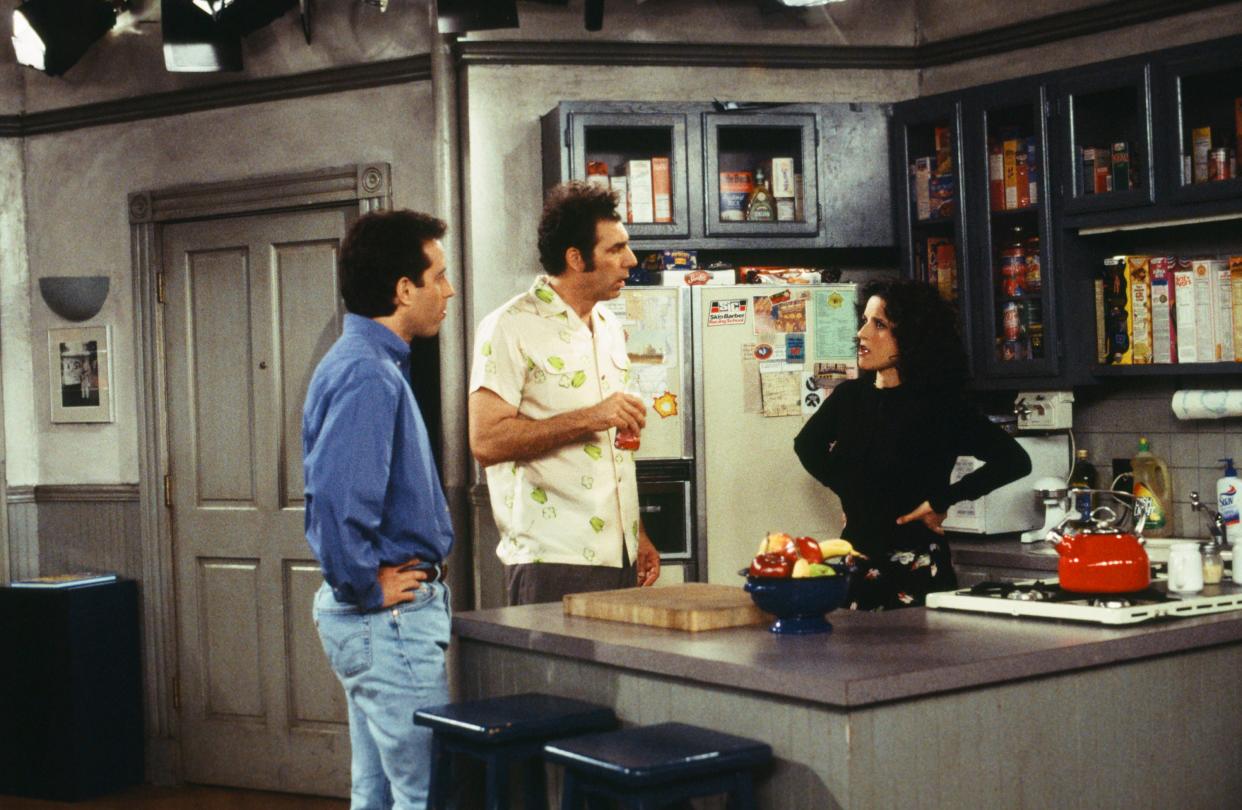
Photo: Joseph Del Valle/NBCU Photo Bank/NBCUniversal via Getty Images
For a show about nothing, Seinfeld’s sets were certainly something. The NBC sitcom, which premiered in July 1989, boasted 1,380 sets over the course of nine seasons, taking viewers on a delightfully neurotic tour of New York City—from an overcrowded Chinese restaurant to a movie theater bathroom that sparks a toilet paper debate.
“We shot sets, struck sets, you couldn’t move in here there were so many sets,” Seinfeld’s production designer, Thomas Azzari, shared in an HBO bonus feature. “We had so many sets that the stage wasn’t big enough—we had to move to the biggest stage on the lot,” Larry David, the show’s cocreator, added.
There were, of course, the two classics that remained a steadfast staple at CBS Studio Center in Los Angeles, where the show was filmed—Jerry Seinfeld’s Upper West Side apartment, with its well-worn navy blue couch and white-and-blue door, which needed to be replaced three times due to the sheer force of Kramer’s entrances; and Monk’s Café, a quintessential old-school New York City diner complete with comfy brown booths, perfect for kvetching about low-talking girlfriends and coma etiquette.
In celebration of the series’ 35th anniversary, read on for some little-known tidbits about the sets and locations of Seinfeld.
Seinfeld’s iconic parking garage had to be faked
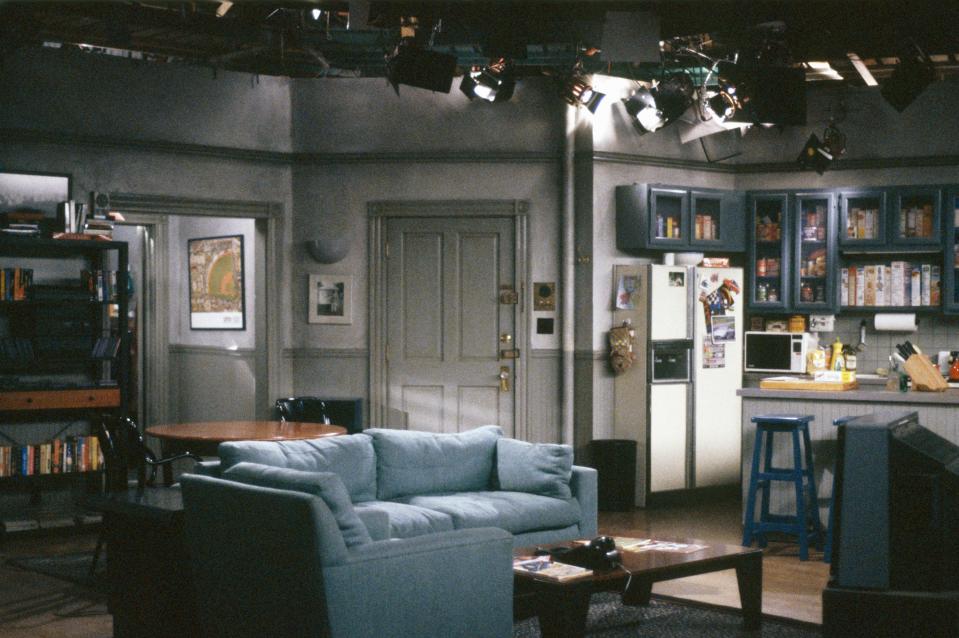
Seinfeld
The beloved Seinfeld episode involving the gang—the titular character played by the comedian of the same name and his three pals, Elaine (Julia Louis-Dreyfus), George (Jason Alexander), and Kramer (Michael Richards)—locked in a multilevel parking garage made for a serious production conundrum. There were conversations about filming on-location, but sound and lighting made the process too tricky, so the crew wound up building a garage right on the soundstage, disassembling Jerry’s apartment and Monk’s Café for the occasion—an unprecedented move for sitcoms at the time.
Thirty cars were crammed inside and mirrors were placed on either side of the stage to give the illusion that it was actually a cavernous space. (Freeze-frame the episode, director Tom Cherones noted, and you’ll catch a little distortion.) “I think we finished [shooting] at three or four o’clock in the morning,” he recalled in a Television Academy Foundation interview. “It was an unusual day.”
Fun fact: Greg Daniels, future creator of The Office, sold David and Seinfeld the idea for this episode, which was based on his own father’s standoff with another driver over a parking space.
You can buy soup from the real-life Soup Nazi
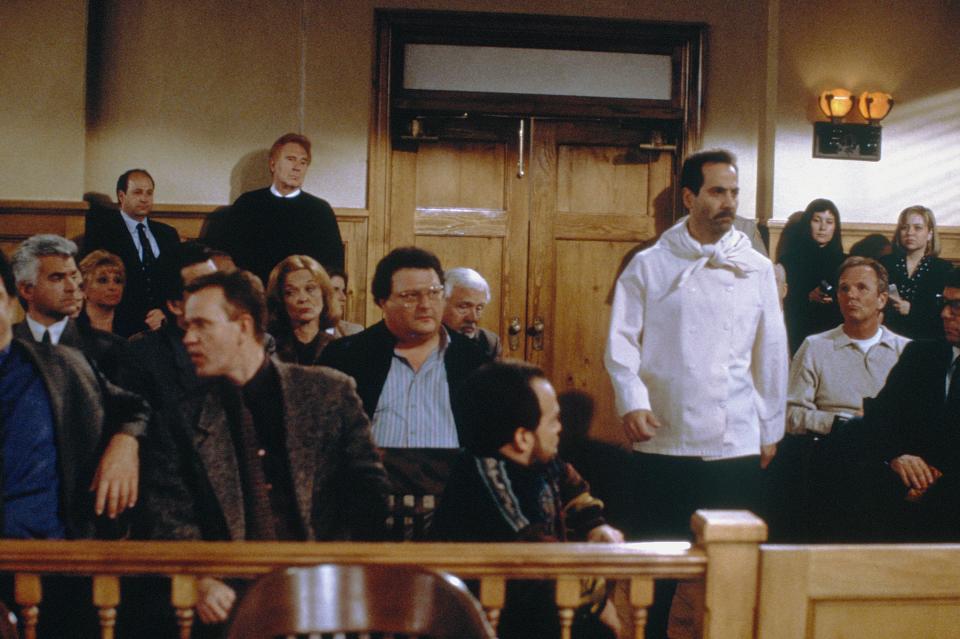
Seinfeld
The Soup Nazi, a tough-talking proprietor who turns away customers by barking “No soup for you!” was inspired by Albert Yeganeh, the real-life owner of New York City’s The Original Soupman. You can visit his storefront—praised by The New York Times for serving “art, not soup”— where it still stands at 259A W. 55th Street.
Yeganeh, who was profiled by The New Yorker in 1989 about his popular soups, explained the philosophy behind his hard exterior. “I tell you, I hate to work with the public. They treat me like a slave,” he said. “My philosophy is: The customer is always wrong and I’m always right. I raised my prices to try to get rid of some of these people, but it didn’t work.”
Some of Seinfeld’s most memorable props still exist
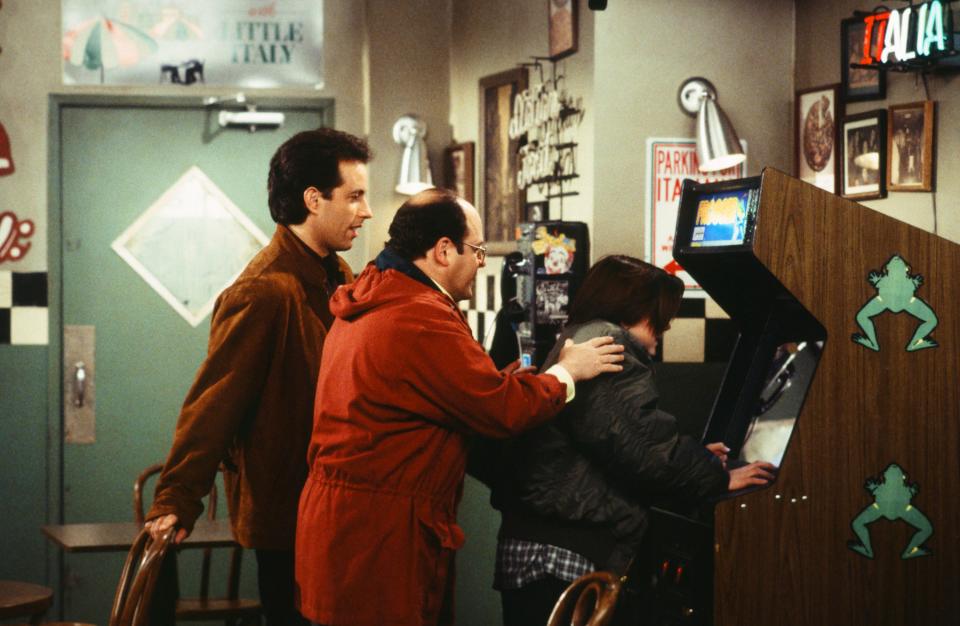
Seinfeld
Azzari has a treasure trove of Seinfeld artifacts in his New Mexico home, including the hands from the Bubble Boy suit, the huge chest of drawers Kramer uses in his apartment for guests, and a piece of George’s Frogger arcade game.
Looking back on the wealth of creative production feats Azzari tackled over the course of nine seasons, the production designer told the Santa Fe New Mexican that he once informed David and Seinfeld, “You write the stuff, and we’ll make it work. Don’t think about production. Think about concept and what you want to do.”
You can visit some of the show’s exteriors
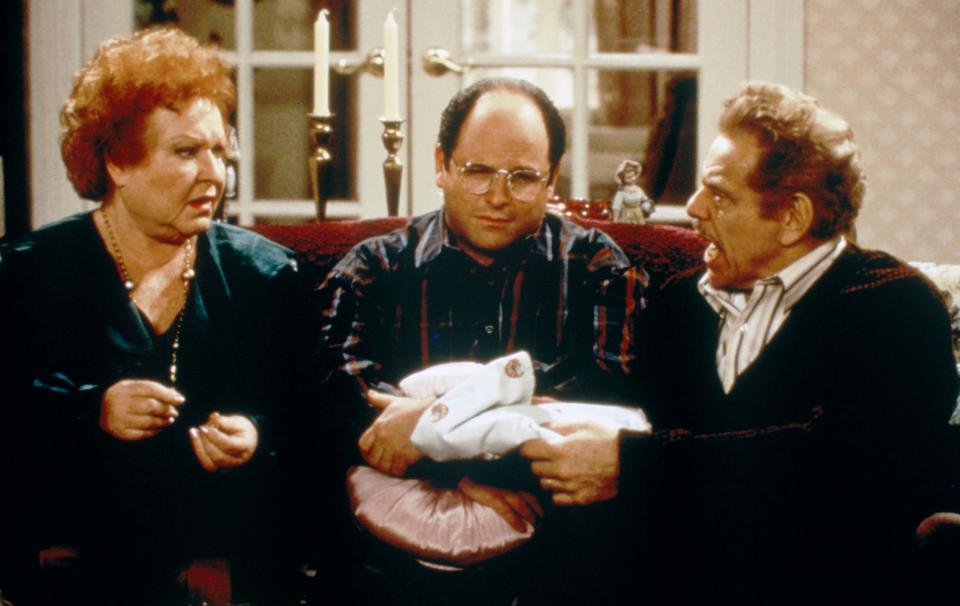
Seinfeld
Fancy strolling past Jerry and Kramer’s apartment? You’ll need to head to Los Angeles for that. The exterior shots were filmed at 757 S. New Hampshire Avenue in Koreatown, and the location, an apartment building built in 1928, looks untouched by time since its Seinfeld days.
Other exterior shots can be found back in New York City, including The Plaza Hotel, where Elaine sneaks a complimentary room, and George’s parents’ home, at 22-37 37th Street in Astoria, Queens.
The real-life Monk’s Café refused to lean all the way into its fame
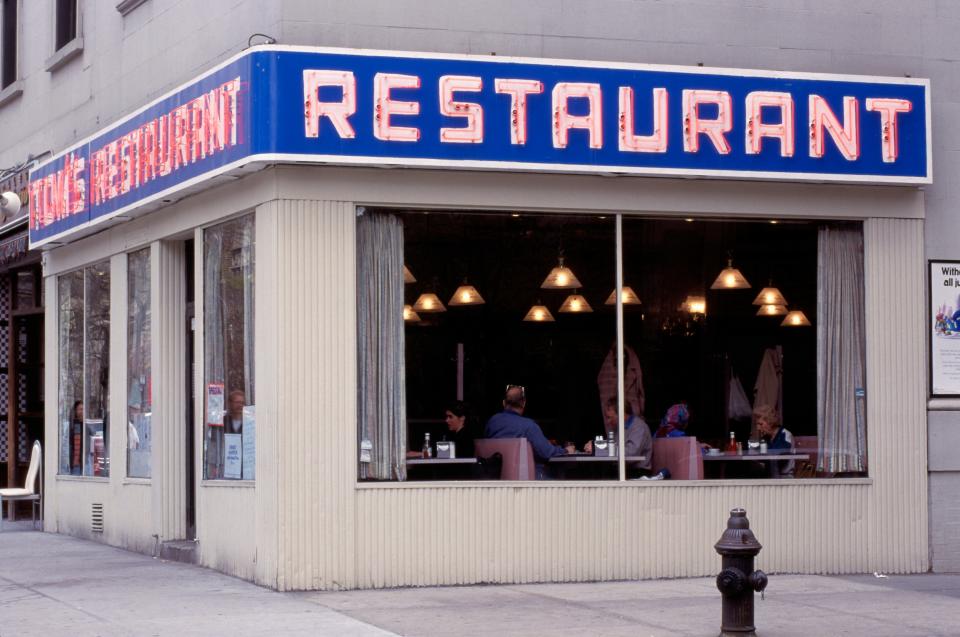
Exterior and Looking in at Tom's Restaurant
Turn the corner on West 112 Street and Broadway in New York City’s Upper West Side and you’ll stumble on the exterior of Jerry, Elaine, George, and Kramer’s favorite diner, accompanied by the familiar blue-and-red neon lettering of its real name, Tom’s Restaurant.
Despite becoming a landmark for Seinfeld fans and a celebrity in its own right, the owners of the local establishment declined an outpouring of offers to buy and franchise the restaurant. “You can sit down, you can have a cup of coffee, you leave here with your wallet intact. What more could you ask for?” Mike Zoulis, Tom’s manager and owner, shared in the 2014 documentary Tom’s Restaurant, per Jennifer Keishin Armstrong’s book Seinfeldia. “It’s not like we’re seeking fame or fortune.”
Still, those who love the show will delight in a few hat tips to Seinfeld inside, including a framed picture of Kramer behind the counter.
Jerry’s apartment and Monk’s Café were saved after filming wrapped
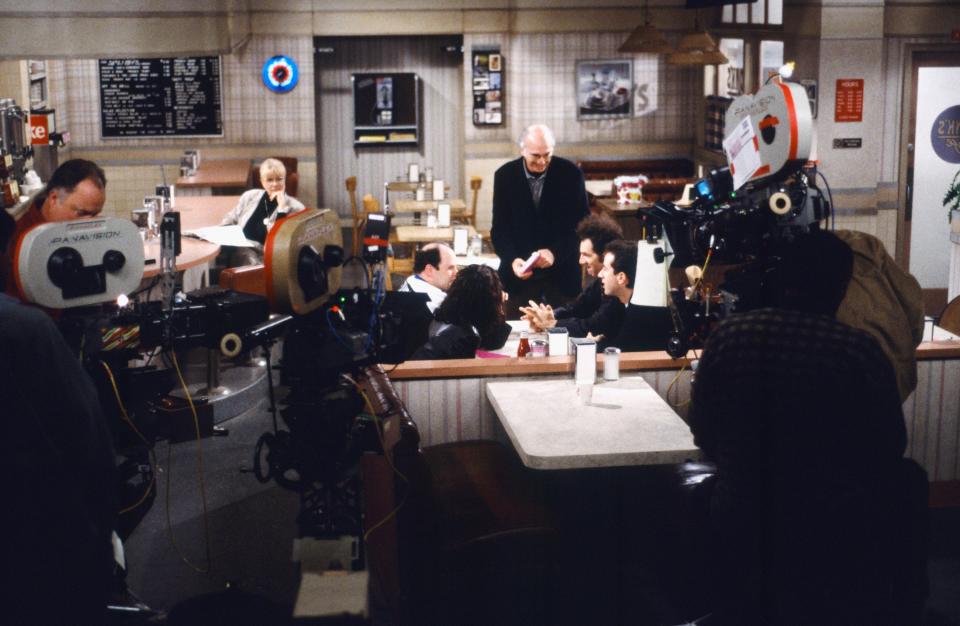
Seinfeld set
When Larry David decided to stage a Seinfeld reunion on Curb Your Enthusiasm, more than a decade after the series went off the air, Jerry’s apartment and Monk’s were pulled out of Warner Bros’s cold storage and resurrected for the occasion. They had packaged up the entirety of the sets for all those years—including the original booths, Monk’s Café door, and Jerry’s kitchen countertop.
One of the missing pieces would turn out to be Jerry’s entire front wall, which Seinfeld took home after shooting wrapped. The production crew replicated the door and it looked almost perfect to Wayne Knight, who played Newman—with one exception. “There were so many kick marks on the bottom of the door from Michael’s [Richards] feet kicking the door open,” he said in an HBO bonus feature. “This one looks very, very clean.”
Originally Appeared on Architectural Digest
More Great Celebrity Style Stories From AD
The Full House House Hits the Market for $6.5 Million—Take a Peek Inside
Julianne Moore’s Homes: A Look at the Oscar Winner’s Stunning Residences
Cabaret Transforms a Classic NYC Theater Into an Uninhibited German Underground
Not a subscriber? Join AD for print and digital access now.
Browse the AD PRO Directory to find an AD-approved design expert for your next project.


